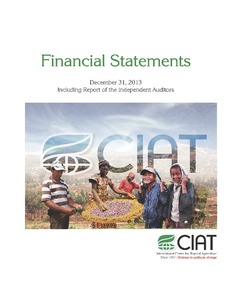Mission
To reduce hunger and poverty, and improve human nutrition in the tropics through research aimed at increasing the eco-efficiency of agriculture.
People
CIAT’s staff includes about 200 scientists. Supported by a wide array of donors, the Center collaborates with hundreds of partners to conduct high-quality research and translate the results into development impact. A Board of Trustees provides oversight of CIAT’s research and financial management.
Values
- Shared organizational ethic
- We respect each other, our partners, and the people who benefit from our work. We act with honesty, integrity, transparency, and environmental responsibility in all of our joint endeavors.
- Learning through partnerships
- We work efficiently and pragmatically together and with partners. Considering our diversity to be a key asset, we adapt readily to change and strive to improve our performance through continuous learning.
- Innovation for impact
- We develop innovative solutions to important challenges in tropical agriculture, resulting in major benefits for the people who support, participate in, and profit from our work.
Members:
Resources
Displaying 301 - 305 of 958CIAT Financial Statements. December 31, 2013: Including report of the independent auditors
Advances in improving tolerance to waterlogging in Brachiaria grasses
An inter-institutional and multi-disciplinary project to identify Brachiaria genotypes, which combine waterlogging tolerance with high forage yield and quality, for use in agricultural land in Latin America with poor drainage, is underway. The aim is to improve meat and milk production and mitigate the impacts of climate change in the humid areas of Latin America. Researchers at the International Center for Tropical Agriculture (CIAT) have developed a screening method to evaluate waterlogging in grasses. Using this method, 71 promising hybrids derived from the species,
An integrated agro-ecosystem and livelihood systems approach for the poor and vulnerable in dry areas
More than 400 million people in the developing world depend on dryland agriculture for their livelihoods. Dryland agriculture involves a complex combination of productive components: staple crops, vegetables, livestock, trees and fish interacting principally with rangeland, cultivated areas and watercourses. Managing risk and enhancing productivity through diversification and sustainable intensification is critical to securing and improving rural livelihoods.






